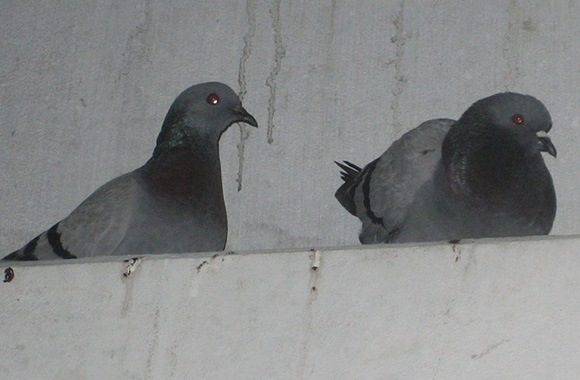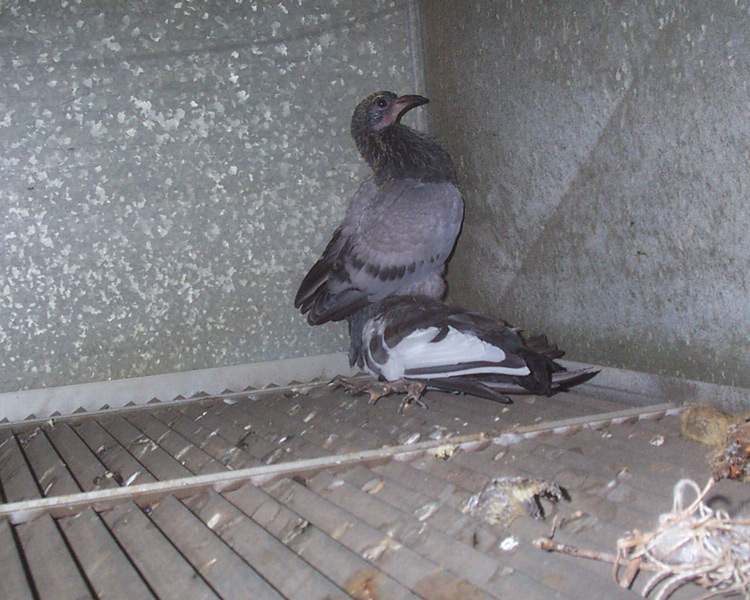How to get rid of nuisance birds
We often go to great lengths to attract birds to our yards. They can be very enjoyable to watch, and beneficial as pest control and pollinators. There are dozens of clever and colorful feeders on the, market today, and special foods formulated to attract different types of birds. Unfortunately, even the most beautiful song bird, or acrobatic flyer can become a nuisance bird. When birds start eating crops or destroying property, nesting in bothersome places, or leaving piles of droppings on cars and lawn furniture they soon become a liability. Here is a simple to follow 5 step plans to help rid your property of nuisance birds once and for all.


Step 1
Birds, like most wild animals are driven by the need for food. A major step in ridding your land of nuisance birds is to make food unavailable to them. This not only includes feed, pet foods and garbage, but your gardens, berry bushes, and fruit trees as well. A good way to do this without harming your plants is to cover them. There is a wide variety of affordable netting and landscape cloth available on the market today. Use inexpensive landscape netting, or any type of lightweight net to cover trees and plants. Landscape netting can allow ample sunlight for your plants to filter through while protecting them from the ravenous birds. After trying to gain access to access your plants for a few days, the birds will soon realize there is a barrier between them and their target (your precious plants) under the netting. Once they realize they can no longer access the food, the birds will move on in search of other more accessible hunting grounds. Leave your netting up to keep nosy birds from relocating back to your yard.
Step 2
Another priority for birds is an ample water supply for drinking and bathing. Eliminate sources of standing water. Not only do bodies of water allow for a watering hole and bath for the birds, it breeds mosquitoes for them to eat. Remove all outside water sources including pools, ponds, fountains, animal waterers, and bird baths. If you are just not willing to do without your water effects, then try deterrents such as adding plastic owls, rubber snakes, spinning Mylar whirligigs, or wind chimes. Using these scare tactics can often make the birds move on. You can also find sonic emitters, electronic devices that let out a high pitched sound, designed to drive birds away.
Step 3
The final need for birds is a safe place to nest/roost. Take stock of the lay of the land. Modifying your landscape by making simple changes can make your property less attractive to wild birds. Most Birds prefer dense cover in which to hide, nest, and feed. Heavy brush, dense thickets and vines make perfect cover. If your property also has dead trees for nesting and to provide protection from predators, and it’s a bird’s paradise. Clean up your yard and eliminate all these areas where birds can hide and breed. Getting rid of this wild growth and deadfall will make the birds want to move on to somewhere that they can create their own habitat- not on your property.
Step 4
Remove all convenient food sources that the birds can easily access. Animal feeders such as bird feeders, squirrel feeders and even pet food bowls are a serious temptation to many birds. So is garbage that is not properly contained or rubbish heaps. Many plants, trees and flowers that grow in your yard can be a favorite meal for nuisance birds too. Most folks are not willing to dig up their flower beds, plants, or trees, but our handy scarecrow tactics mentioned in Step 2 can work in flowerbeds as well. The more flowers you grow, the more birds you can feed so if you can eliminate any plants or flowers, perhaps dead or dying plants that will help. .
Step 5
Animal feed and pet food can be a great temptation to birds in your yard. Move any pet food and water located outdoors inside and establish routine feedings for your pet. Pet food is one of the most common attractants for wild birds. If you have livestock or poultry, keep their feed in sealed containers, and clear up any uneaten feed. In April 2007 The World Health Organization released information on avian influenza as it pertains to domestic animals contracting avian influenza as well as a variety of other diseases from affected birds. It is most often caused through food cross-contamination. Other diseases such as types of blood fever can also be spread through droppings. If you are still unable to rid your property of nuisance birds, it is time to contact your local wildlife service, or call an animal removal service. These are trained professionals that can quickly assess your bird problems and formulate a plan to help you successfully get rid of the birds in question.

It’s nice to look out of the window and see a beautiful garden with trees and flowers, and wildlife pottering around. Unfortunately, you can’t pick and choose the wildlife that passes by. You might be lucky and never have a pest problem in your life, but if you’re feeding the animals, or making your garden pleasing for them in any way, you can’t guarantee that just the birds you want will take up your offers of kindness.
If you leave food out for birds, you can’t be surprised if pigeons eat that food just as much as the belted kingfisher you’re trying to get a glimpse of.
In order to get rid of nuisance birds, you will need to put things in place that get rid of all birds. You’ll need to stop leaving food out indefinitely. All the while you continue to have a pest pigeon problem (for example), you can’t put food out for American robins. All food sources need to be eliminated.
Other approaches you can take to get rid of nuisance pigeons and other birds include:
- using strips of foil or plastic in doorways, windows and hanging from tree branches
- using light or sound devices
- using bird repellents such as liquids, gels or granules
- installing bird spike strips or netting
- adding and moving around predator dummies and decoys

